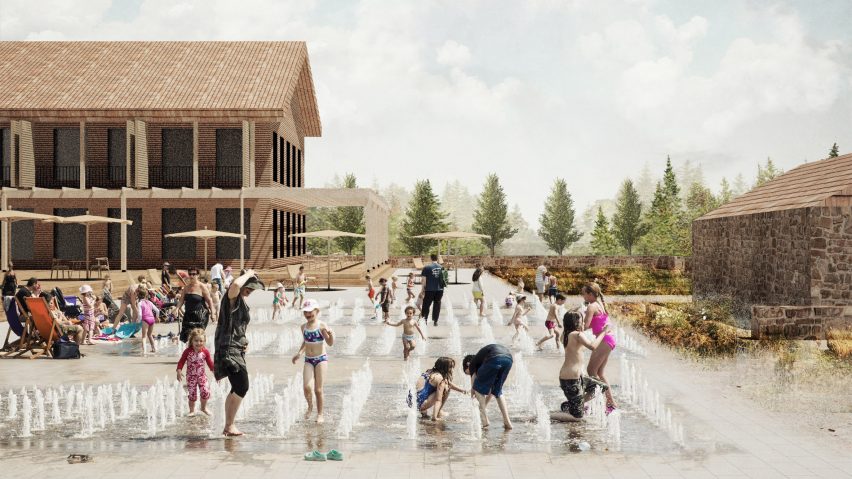
University of Waterloo spotlights 10 architecture projects
Dezeen School Shows: a project exploring patterns of depopulation in Japan's rural villages and 3D-printed stoneware designed to filter light are included in Dezeen's latest school show by students at the University of Waterloo.
Also included is a flood-prevention strategy designed for the Roncador River community in Brazil and a project that analyses how civilians in war-torn countries alter their local architecture to protect themselves.
University of Waterloo
Institution: University of Waterloo
School: School of Architecture
Courses: Honours Bachelor of Architectural Studies (BAS) and Master of Architecture (MArch)
School statement:
"The Honours Bachelor of Architectural Studies degree provides the foundation of skills, knowledge, judgment and practical experience required for subsequent professional studies in architecture.
"The Master of Architecture degree assists students in growing and enhancing their knowledge in areas of design, history, theory, building technology, media, methods and professional practice.
"Students acquire an understanding of the workings of society and culture, the principles of physics, materials and techniques of construction, human interaction with the natural and built environment, historical processes, critical thought and the diverse forms of creative expression."
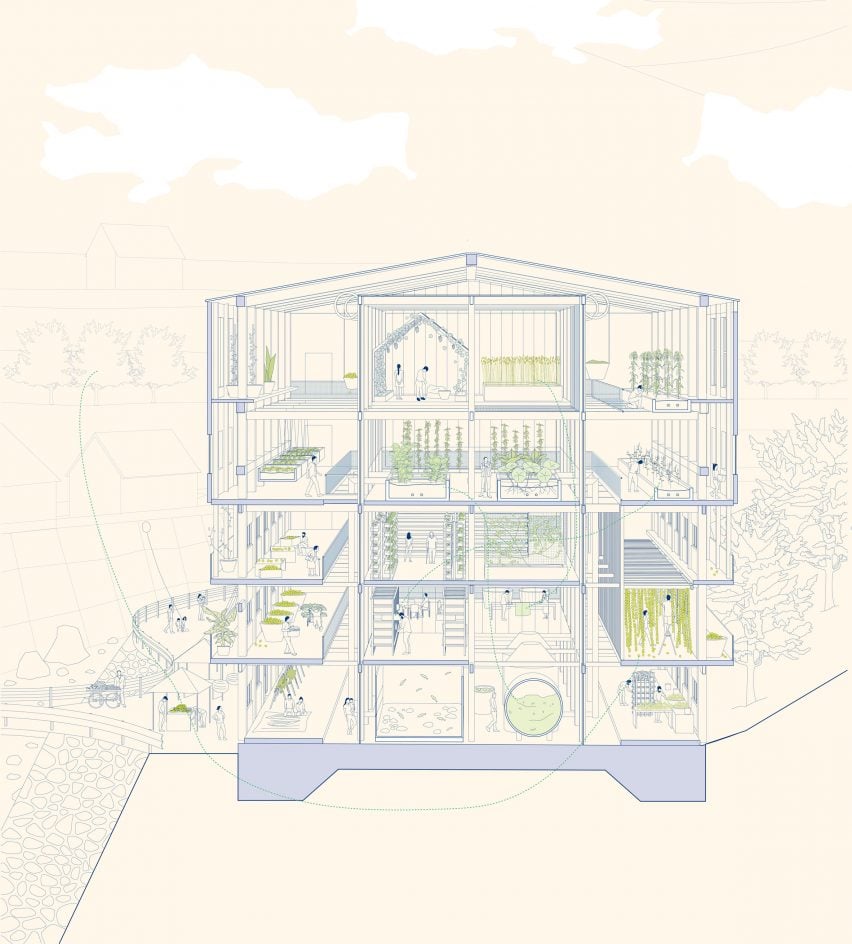
Finding a New Commons: Re-Inhabiting the School in Post-Urban Japan by Julia Nakanishi
"This thesis explores the role of architecture in Japan's depopulating rural areas, where ageing and urban migration have resulted in fragmented relationships within communities and their landscapes.
"The design work of the thesis, developed through interviews with community members and visits to the sites, proposes re-inhabitations of vacant public schools in three rural communities.
"The vacant schools – referred to as haikō in Japanese – are artefacts of depopulating communities with low birth rates. Each proposal's programme and architectural interventions work to speak to the land and its history with humans and highlight stories of timber, rice cultivation and other forms of agriculture.
"The proposals imagine futures of degrowth, where long-term and short-term residents of each community can continue to practice and learn new ways of living sustainably with the land."
Student: Julia Nakanishi
Course: Master of Architecture (MArch)
Tutors: Lola Sheppard and Jane Hutton
Email: jnakanishi[at]live.com
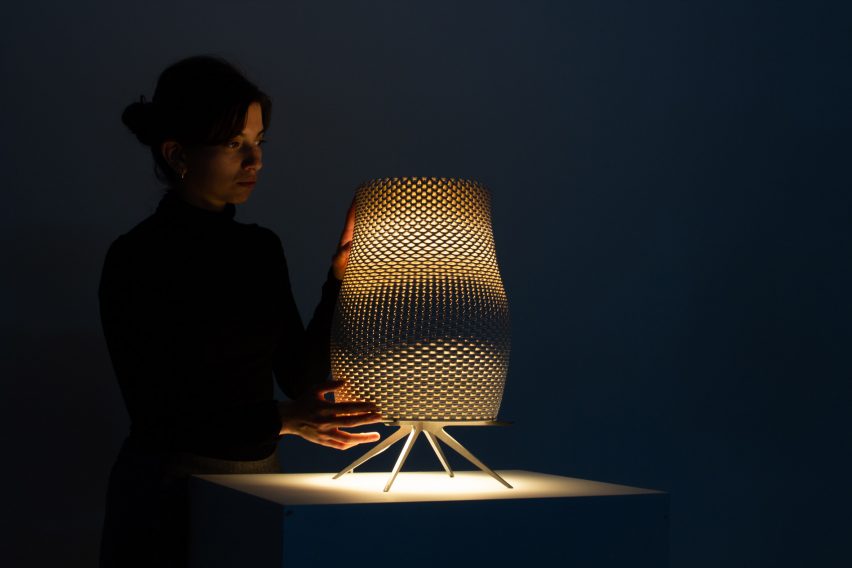
Grading Light: Utilising plastic deformation to functionally grade ceramic light screens by Isabel Ochoa and James Clarke-Hicks
"When interacting with light, surface geometries and clay bodies can work together to heighten the perception of depth and alter illumination.
"This thesis investigates how clay 3D printing can generate materially responsive engagements between ceramics and light.
"Liquid deposition modelling is used to study the plastic deformation of clay during wet-processing. The research outputs are a series of stoneware and porcelain screens that vary in brightness and illumination based on how light may be obstructed, reflected or transmitted across their surfaces.
"Prototypes are developed at full scale to understand the relationship between sensory engagement and material properties."
Students: Isabel Ochoa and James Clarke-Hicks
Course: Master of Architecture (MArch)
Tutor: David Correa
Email: hello[at]ochworks.com
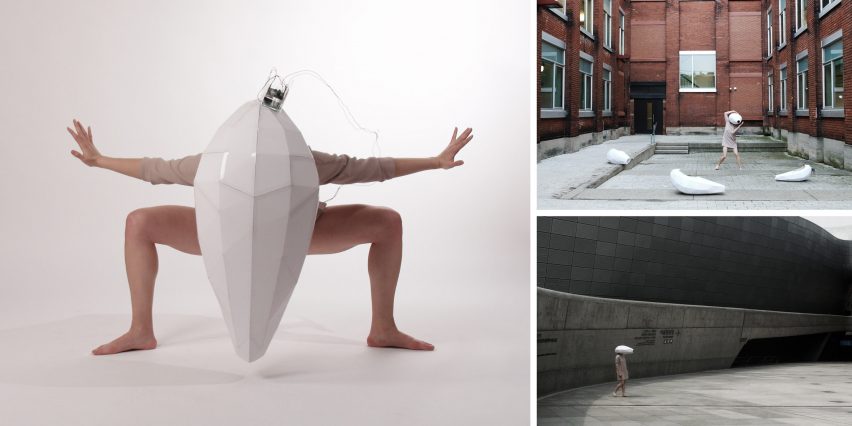
The Artefacts of No-Place by Jessica Hanzelkova
"This thesis involved the creation of eight artefacts used to transform and co-opt public space through a series of performances.
"The artefacts were positioned on the head, consistently made in white colour as a play on the author's biracial identity, and they modulated light to the rhythm of the wearer's heartbeat to play with the beautiful abjectness of mortality.
"The artefacts were devices of transformation and subversion of 'the gaze’ – a well-interrogated term in cultural studies, critical theory, and feminism that distinguishes subject and object.
"They offered a liminal space for the wearers to inhabit, somewhere between subject and object; human and non-human; animal and machine."
Student: Jessica Hanzelkova
Course: Master of Architecture (MArch)
Tutor: Dereck Revington
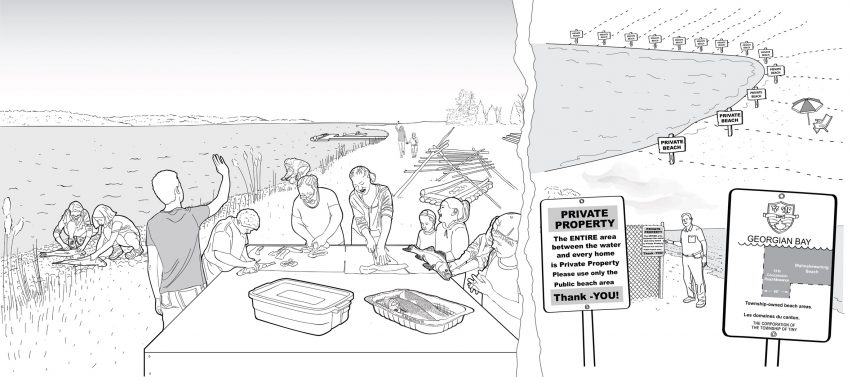
We Belong With the Water: Mobility, Temporal Habitation, Rituals, and Other "Incidental" Elements Surrounding Fish Harvesting Traditions of Indigenous Communities in Southern Georgian Bay by Dani Kastelein
"This original work draws attention to the cultural schisms between Indigenous peoples' use of land and the hegemonic recreational and commercial practices by non-Indigenous cottage-goers and owners in our society.
"Through the colonial agenda of increased land privatisation, preservation, exploitation and its commodification by settlers, Indigenous sovereignty over these lands and waters continues to be usurped and undermined.
"Through the format of a graphic novel, this thesis identifies elements necessary for Indigenous self-determination, including water access, seasonal rituals, mobility and temporary habitation.
"The story expresses the fundamental need to reaffirm Indigenous rights and visibility in spaces that they have been pushed out of for too long."
Student: Dani Kastelein
Course: Master of Architecture (MArch)
Tutor: Jane Mah Hutton
Email: dkastelein09[at]gmail.com
Robotic stacking: structurally informed free-form timber structure system using standard and non-standard components by Zahra Falamarzi
"This research project developed a robotics-based production system for building a free-form structure.
"The idea is to create complex geometries and differentiation while benefiting from the concept of automation and repeatability in architecture.
"An integrative approach to both structure and aesthetic potential is developed through an innovative optimised hybrid system using both standard and easily manipulated non-standard components.
"The proposed innovative system is examined through two physical experiments – the wall and the bench structure – in order to validate that an articulated building component with diverse architectural functions is achievable out of basic materials through digital design and fabrication in architecture."
Student: Zahra Falamarzi
Course: Master of Architecture (MArch)
Tutor: David Correa
Email: info[at]meanders.studio
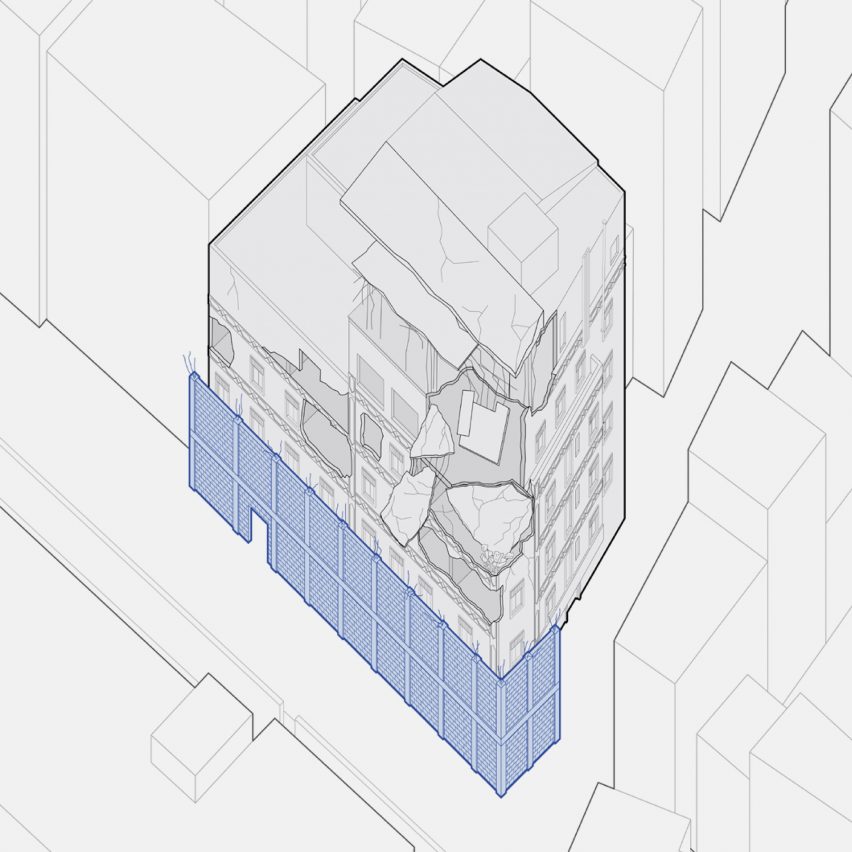
Fault Traces: Civilian Architectural Responses in the Syrian Civil War by Omar Ferwati
"In the Battle of Aleppo, like all contemporary conflict, combatants targeted people's homes, halted their movement and cut their resources as tactics of war.
"To survive this violence, people had to constantly change the architecture and spaces around them – a strategy that this project calls civilian architectural responses.
"They include any spatial action that protects civilians against threats to their lives.
"Each intervention is born as a response to existing violence and could range in scale and type from modifying buildings and building new structures, to creating new resource networks altogether. This thesis defines and analyses cases of this survival."
Student: Omar Ferwati
Course: Master of Architecture (MArch)
Tutor: Robert Jan van Pelt
Email: oferwati[at]uwaterloo.ca
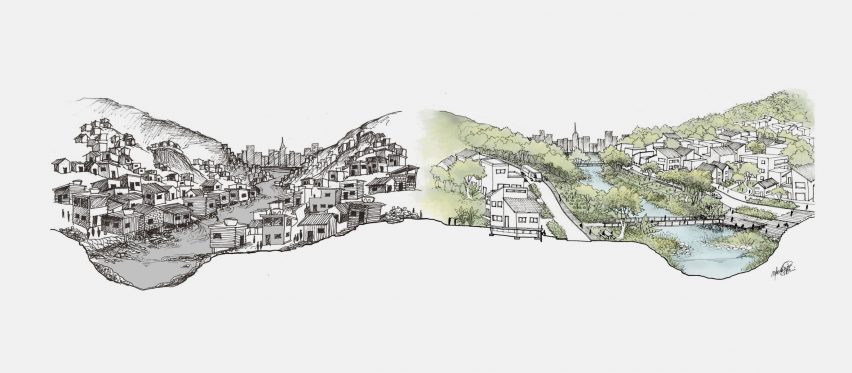
WaterWoven: Living on the margins in the Roncador River region, Brazil by Maria Luiza de Souza Oliveira Ottoni
"In marginalised Brazilian peripheries, informal settlements located on riverbanks have been increasingly suffering from more intense annual floods, as is the case with the Roncador River community in Duque de Caxias City.
"Which design strategies would enhance the community's adaptive capacity to floods and allow them to safely stay, grow and thrive in the long term?
"By acknowledging water as an ally, this thesis proposes a comprehensive solution for flood risk reduction through an integrated approach in design.
"It connects a system of nature-based solutions along the watershed with amphibious incremental housing to build an affordable, evolutionary, and flood-adaptive community that empowers their resilience."
Student: Maria Luiza de Souza Oliveira Ottoni
Course: Master of Architecture (MArch)
Tutor: Elizabeth English
Email: mlottoni[at]uwaterloo.ca
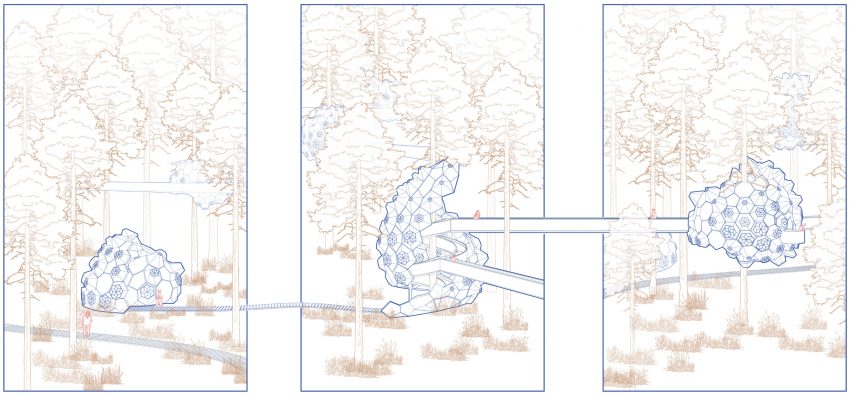
Variance by Emily Chen, Glenn Lu and Lyric Barnik
"Variance is an architectural exploration derived from the research of biomimetic principles of the maranta leuconeura, the oxalis triangularis and the mimosa pudica's plant-movement strategies.
"These nodes are comprised of climate-responsive apertures informed by the activation methods observed, which combine principles of elastic instability such as snap-buckling and hygroscopic movement.
"This combination allows for an acceleration of the humidity-dependent hygroscopic movement itself and abstraction into reversible energetic elastic motion at the human scale.
"By using smarter materials and adopting natural strategies, we strive to move away from electro-mechanical systems and towards a more durable and sustainable solution to adaptive systems."
Student: Emily Chen, Glenn Lu and Lyric Barnik
Course: Bachelor of Architectural Studies (BAS)
Tutor: Dr David Correa
Email: zhixiao.chen[at]uwaterloo.ca, glennhongdao.lu[at]uwaterloo.ca and lhbarnik[at]uwaterloo.ca
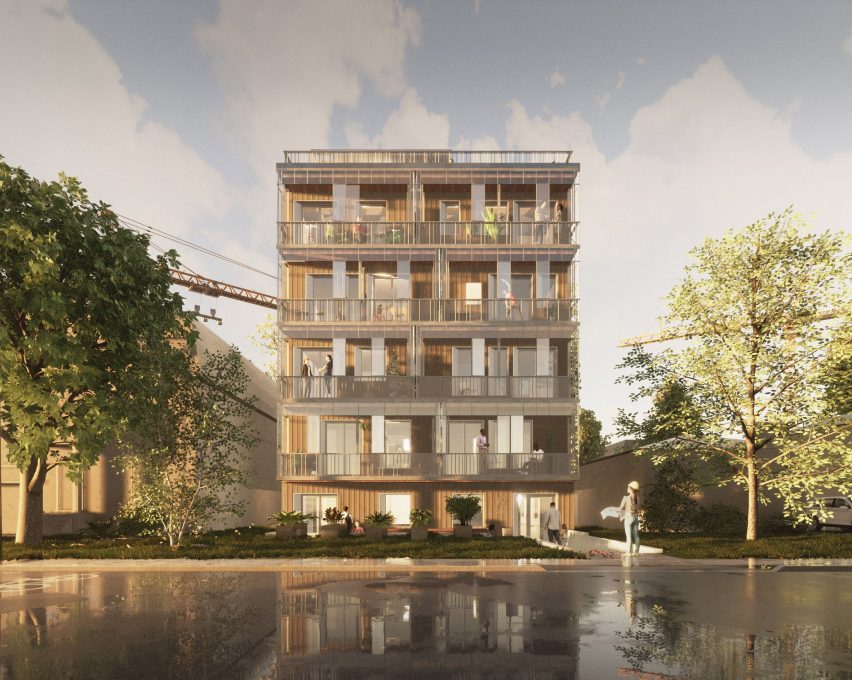
Democratising Residential Architecture: Platform Based Spatial Agency by Vincent Min
"The existing systems of housing production have become investment vehicles and are devoid of inhabitant agency. This financialised architecture is at best reductively standardised and poorly constructed and at its worst socially discriminative and economically precarious.
"This thesis explores how home seekers can reclaim spatial agency through collective action by using digital platforms to self-develop homes.
"Through active involvement, home seekers are empowered to leverage mechanisms normally controlled by developers.
"Taking a systems-based approach, the proposals define methods of co-zoning, co-development and co-design. This process is assisted by an online platform which acts as a mediator for communication between home seekers, neighbours and landowners."
Student: Vincent Min
Course: Master of Architecture (MArch)
Tutor: Jonathan Enns
Email: vincent_min[at]outlook.com

Places for Staying, Spaces for Walking by Garrett McGill
"It is crucial to understand architecture in terms of how people see and talk to each other in space.
"Informed by the behaviour and user experience research from Jan Gehl, this project used the critical threshold of 20-to-25-metre distances to create space at a human scale.
"When observing others in this range, most people can perceive the feelings and moods of others. This distance creates a lively, pleasant space where you can enjoy the company of others without being disturbed.
"There is great value in sharing space, as people and activity attract others. This brings life to our buildings."
Student: Garrett McGill
Course: Master of Architecture (MArch)
Tutor: Christie Pearson
Email: gpmcgill[at]uwaterloo.ca
Partnership content
This school show is a partnership between Dezeen and the University of Waterloo. Find out more about Dezeen partnership content here.